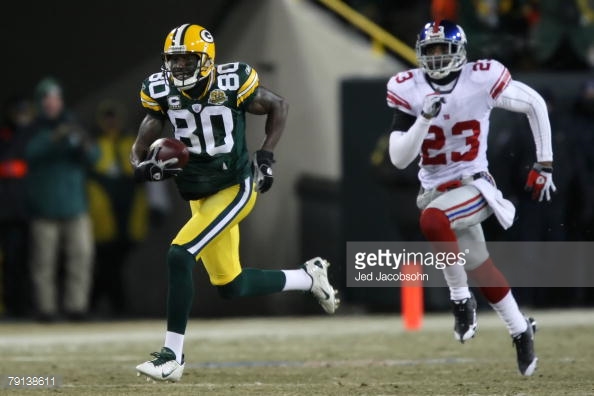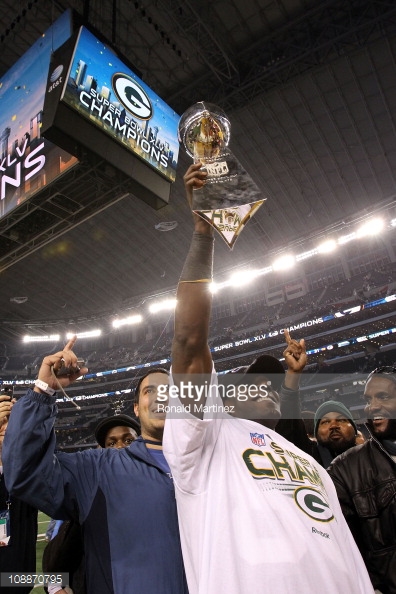
With the induction of Brett Favre to the Class of 2016 for the Pro Football Hall of Fame, the Green Bay Packers now have 24 individuals who have busts in Canton.
Those individuals are Curly Lambeau (Class of 1963), Robert “Cal” Hubbard (Class of 1963), Don Hutson (Class of 1963), Johnny “Blood” McNally (Class of 1963), Clarke Hinkle (Class of 1964), Mike Michalske (Class of 1964), Arnie Herber (Class of 1966), Vince Lombardi (Class of 1971), Tony Canadeo (Class of 1974), Jim Taylor (Class of 1976), Forrest Gregg (Class of 1977), Bart Starr (Class of 1977), Ray Nitschke (Class of 1978), Herb Adderley (Classof 1980), Willie Davis (Class of 1981), Jim Ringo (Class of 1981), Paul Hornung (Class of 1986), Willie Wood (Class of 1989), Henry Jordan (Class of 1995), James Lofton (Class of 2003), Reggie White (Class of 2006), Dave Robinson (Class of 2013), Ron Wolf (Class of 2015) and Favre.
In addition, there are five other players who ended up in the Pro Football Hall of Fame and who briefly played for the Packers for a period of time. Those players are Walt Kiesling (Class of 1966), Emlen Tunnell (Class of 1967), Len Ford (Class of 1976), Ted Hendricks (Class of 1990) and Jan Stenerud (Class of 1991).
Only the Chicago Bears have more individuals in Canton now, as da Bears have 27 enshrinees. Following the Bears and the Packers are the Pittsburgh Steelers (21), New York Giants (20), Washington Redskins (19) and Los Angeles Rams (18).
Prior to 1970, there was not a “Finalist” designation like there is now when they vote on a particular class.
The Pro Football Hall of Fame became an entity in 1963. Lambeau, Hubbard, Hutson and McNally were all part of that inaugural class.
Hinkle and Michalske followed in 1964, while Herber joined them in 1966.
Starting in 1970, the Hall started naming “Finalists” to determine the class for that given year.
Some individuals on the Packers made it into Canton on their first try. This would include Lombardi, Gregg, Starr, Nitschke, White, Robinson (senior), Wolf (contributor) and Favre.
For others, it was a little more difficult. Adderley and Lofton were both inducted on their third try. It took four times for Canadeo, Taylor and Jordan (senior) to get enshrined. It took six times for Davis to get a bust, while Ringo had to wait until his seventh attempt to get into the Hall.
Then there are the two double-digit guys. Wood didn’t get into Canton until his 10th try, while Hornung had to wait until his 12th attempt.
Which takes us to Jerry Kramer. No. 64 has been a 10-time finalist, but has never been given his rightful place among the best of the best in pro football for some unfathomable reason. Kramer was a finalist in 1974, 1975, 1976, 1978, 1979, 1980, 1981, 1984, 1987 and 1997 (senior).
Maybe the 11th time will be the charm for Kramer, when the Pro Football Hall of Fame’s 48-person Selection Committee votes on the Class of 2018 the day before Super Bowl LII in Minneapolis. But before that can happen, Kramer must first be nominated by the Seniors Selection Committee around the third week in August as one of the two senior nominees.
In an upcoming story, I will put out my presentation for Kramer to that committee, just like I was there in front of them.
Kramer deserves a bust in Canton, just like the 24 other individuals who were associated with the Packers. No. 64 deserves to be No. 25.
I don’t want to give away my entire presentation, but here are just a few reasons why Kramer should be a slam-dunk for enshrinement in Canton.
In 1969, the Pro Football Hall of Fame named their NFL 50th anniversary team. The first team consisted of Jim Thorpe, Johnny Unitas, Jim Brown, Gale Sayers, Elroy “Crazy Legs” Hirsch, Cal Hubbard, Don Hutson, John Mackey, Jerry Kramer, Chuck Bednarik, Gino Marchetti, Leo Nomellini, Ray Nitschke, Dick “Night Train” Lane, Emlen Tunnell and Lou Groza.
Every one of the members on that legendary team are enshrined as players in the Pro Football Hall of Fame. All except one. That would be Jerry Kramer.
Kramer was also named to the NFL All-Decade team for the 1960s.
Looking back on the players who were named All-Decade through the year 2000, there were 145 players who were given that designation.
And up until now, 134 of those players have been inducted into the hallowed halls in Canton.
Kramer is one of those 11 All-Decade players who have not yet received their deserved honor as being a member of the Pro Football Hall of Fame.
In addition to that, dozens and dozens of peers of Kramer, who all have busts in Canton, have endorsed Kramer for enshrinement.
No endorsement was bigger than that of Merlin Olsen, who many consider the best defensive tackle in NFL history, as he was named to 14 Pro Bowl teams and was also named All-Pro nine times.
This is what Olsen said about why Kramer deserves his place among the greats in Canton:
“There is no question in my mind that Jerry Kramer has Hall of Fame credentials. Respect is given grudgingly in the trenches of the NFL and Jerry has earned my respect as we battled eye to eye in the pits on so many long afternoons.
Jerry Kramer belongs in the Hall of Fame and I hope you will put this process in motion by including his name on the ballot for this coming year.”

Kramer also shined big in championship games. The Packers won five NFL championships in seven years under Vince Lombardi in the 1960s, but without Kramer’s big contributions in the 1962, 1965 and 1967 NFL title games, that legacy of greatness may not have occurred.
Speaking of Lombardi, he once said this about Kramer in a 1969 article in the Chicago Tribune:
“Jerry Kramer is the best guard in the league,” Lombardi said. “Some say the best in the history of the game.”
Finally, looking back on the Lombardi’s tenure in Green Bay, there are two points which certainly have to be made.
The legendary power sweep was obviously the signature play for the Packers under Lombardi.
Plus, Starr’s quarterback sneak with just seconds remaining in the “Ice Bowl”, had to be the signature moment of the Lombardi legacy.
Kramer played a prominent role in both of those instances.
Bottom line, it’s quite simple. Kramer most definitely deserves to be among the best of the best in Canton, Ohio at the Pro Football Hall of Fame.











